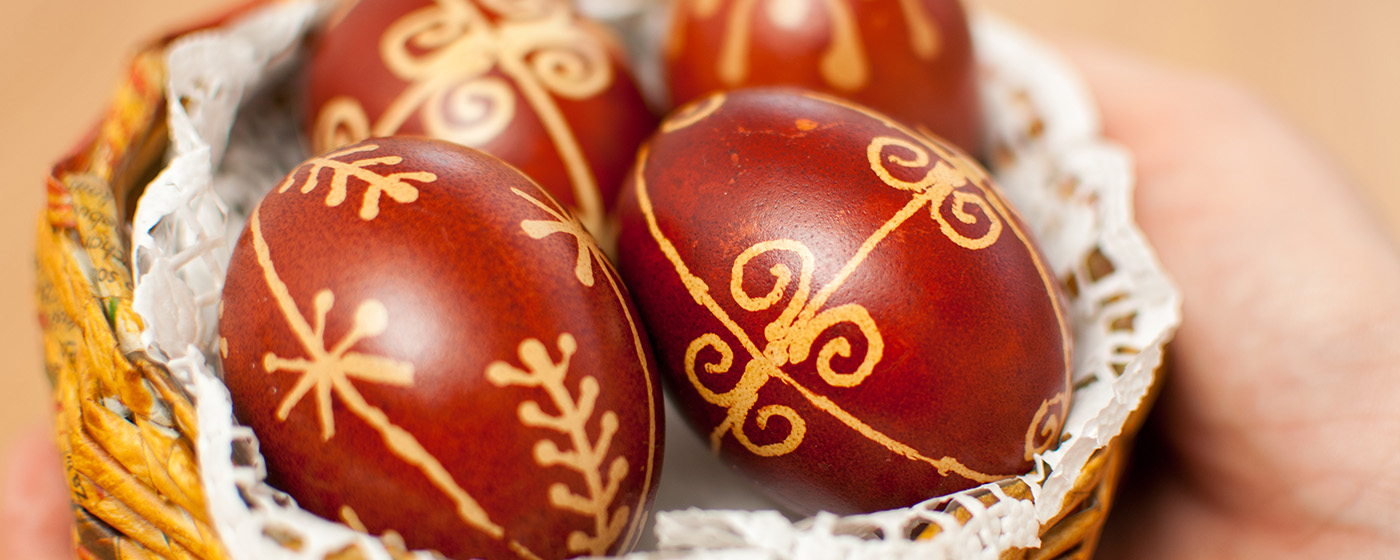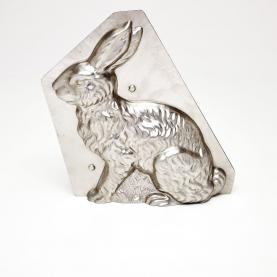Easter
In Christian tradition, Easter brings an end to the Lenten fast with a series of rich dishes. Lamb commemorates the sacrifice and resurrection of Christ and is served as the main course, either as a leg of lamb or in a roast or stew. Other food such as decorated eggs, chocolate rabbits and bells have been introduced into Easter celebrations over time. Their origins lie in various tales from pagan mythology.
The origins of Easter
Easter is a festival in the Christian calendar and is celebrated the first Sunday after the first spring full moon, hence it is celebrated on a different date each year. It follows Lent, a period of forty days of fasting, and can take place on any date between 22 March and 25 April. Easter is the most important celebration in Christianity and commemorates faith in the resurrection of Jesus Christ, as recounted in the New Testament, the foundation of the Christian religion.
Its origins are rooted in Jewish Passover which commemorates the escape from Egypt of the Hebrews enslaved by the Pharaoh (the Exodus). According to the New Testament and Christian tradition, Jesus is associated with the lamb, as he sacrificed himself to redeem humankind from its sins (John 1, 29). Moreover, during the Last Supper, the bread and wine were associated with Jesus’ body and blood (Matthew 26, 26-28). The bread refers to the unleavened bread eaten during the Exodus. The blood refers to the lamb sacrificed before the flight from Egypt and whose blood smeared on the doors saved Jewish families from the tenth plague inflicted on Egypt (Exodus 12, 20-22).
Lamb, eggs, rabbits, bells: What food portrays
The Easter meal, which follows the religious ceremony, is often eaten at midday, bringing the long fast of Lent to an end with a series of rich and sweet dishes. Lamb, which commemorates Jesus’ sacrifice, is often served as the main course, as a leg, roast or stew. In France, lamb is sometimes replaced by pork, especially in rural areas. Pork can be served in the form of smoked ham or sausages and eaten as the starter or the main course of the festive meal.
The egg, a symbol of mourning in Jewish Passover, represents life and rebirth in the Christian Easter celebration. According to an orthodox legend, we owe the first Easter egg to Mary-Magdalene. She is said to have presented herself before the Emperor Tiberius in Rome, with an egg in her hand, to request the condemnation of Pontius Pilate. As she recounted the events surrounding Jesus’ death, the egg turned red, thus convincing the Emperor of the resurrection of Christ. Traditionally, eggs are hard boiled, then painted or decorated with Christian symbols such as the cross. They adorn the Easter table and are eaten by both hosts and guests.
As for the rabbit, its connection with Easter is rooted in folklore. Several Germanic tales and legends relate that, on Easter morning, a rabbit or hare laid coloured eggs. The rabbit was also the emblem of the Anglo-Saxon pagan goddess Ēostre (similar to the term Easter and Ostern in German), who was associated with fertility and honoured in spring. In Scandinavian mythology, the hare symbolised fertility and the world was said to have been born from an egg. However, in France, it is the bells that ‘lay’ the eggs! According to Catholic tradition, church bells fall silent as a sign of mourning on Holy Thursday, a day that commemorates the Last Supper and the announcement of Jesus’ sacrifice. As the story goes, the bells leave for Rome and ring out once again upon their return, on the Saturday, the day that announces Christ’s resurrection, scattering confectionery and coloured eggs over gardens as they fly by.
CRÉTIN, Nadine, 2015. Fêtes de la table et traditions alimentaires. Toulouse : Le Pérégrinateur éditeur.
FEY, Robert, 2008. Jours de fêtes. Histoire des célébrations chrétiennes. Paris : Éditions Seuil.
FLANDRIN, Jean-Louis, COBBI, Jane, 1999. Tables d’hier, Tables d’ailleurs. Paris : Éditions Odile Jacob
THOBOIS, Jean-Marc, 2009. Les fêtes de l’Éternel. Montmeyran : EMETH-Éditions.
TOUSSAINT-SAMAT, Maguelonne, 2004. La très belle et très exquise histoire de gâteaux et des friandises. Paris : Flammarion.






